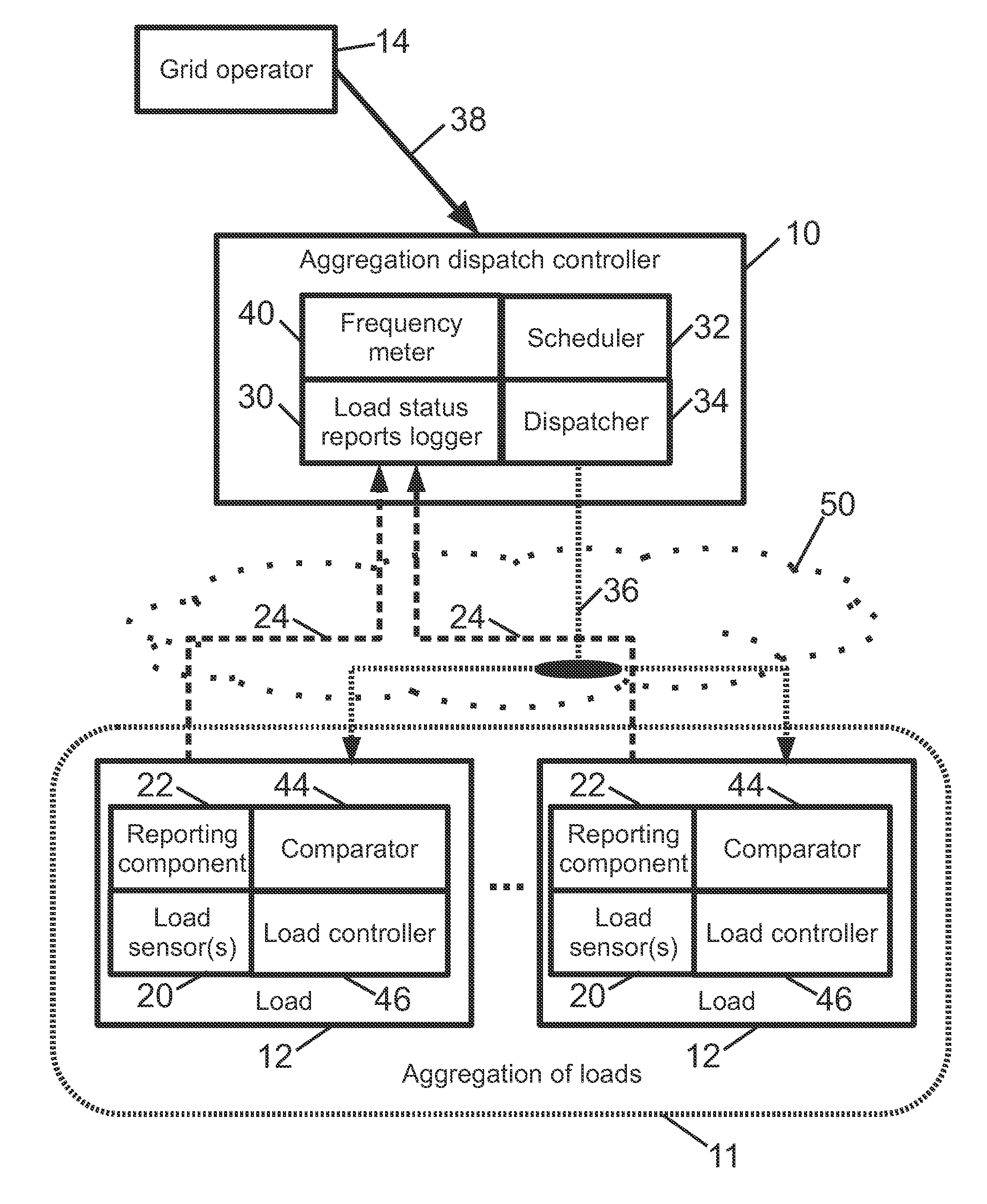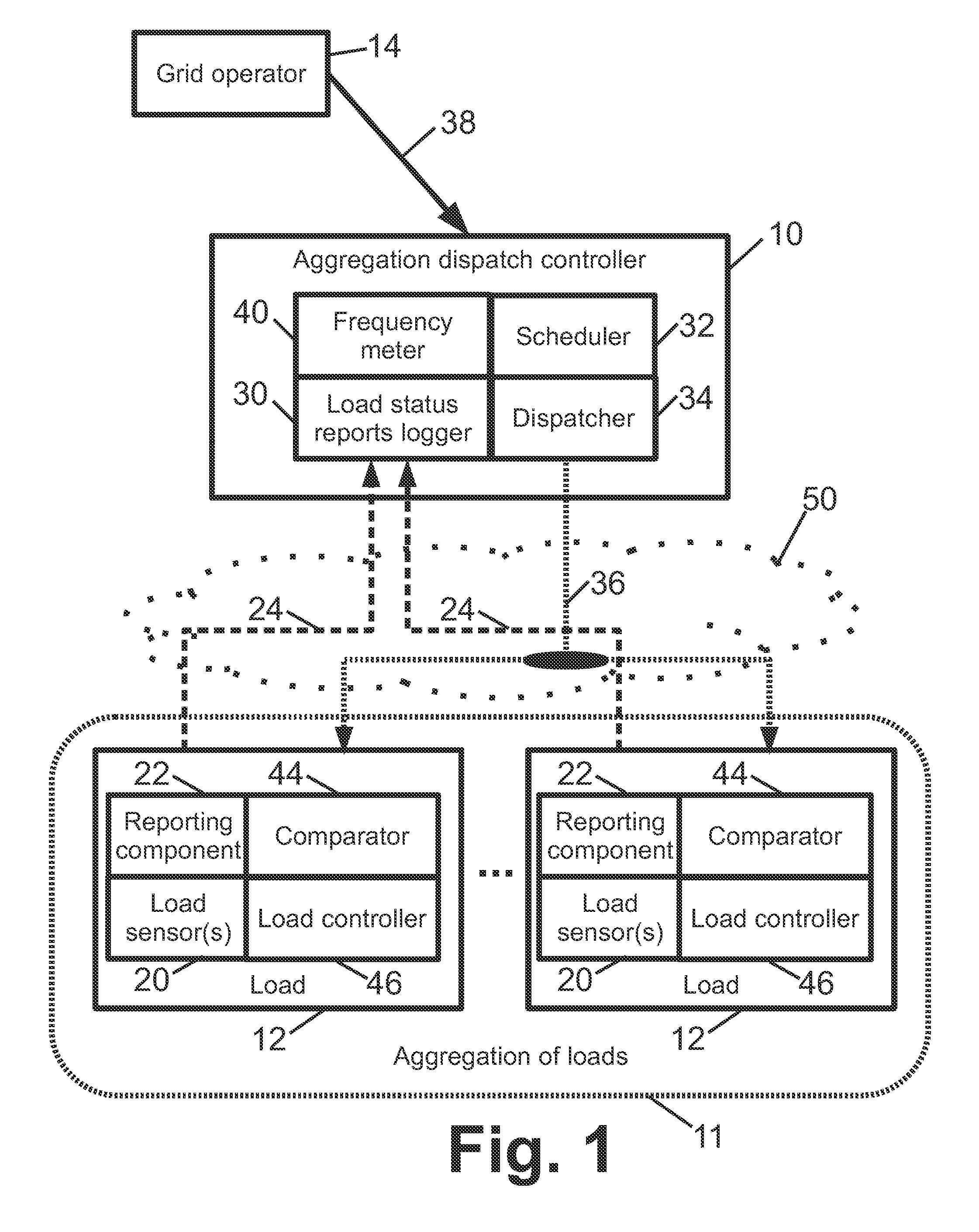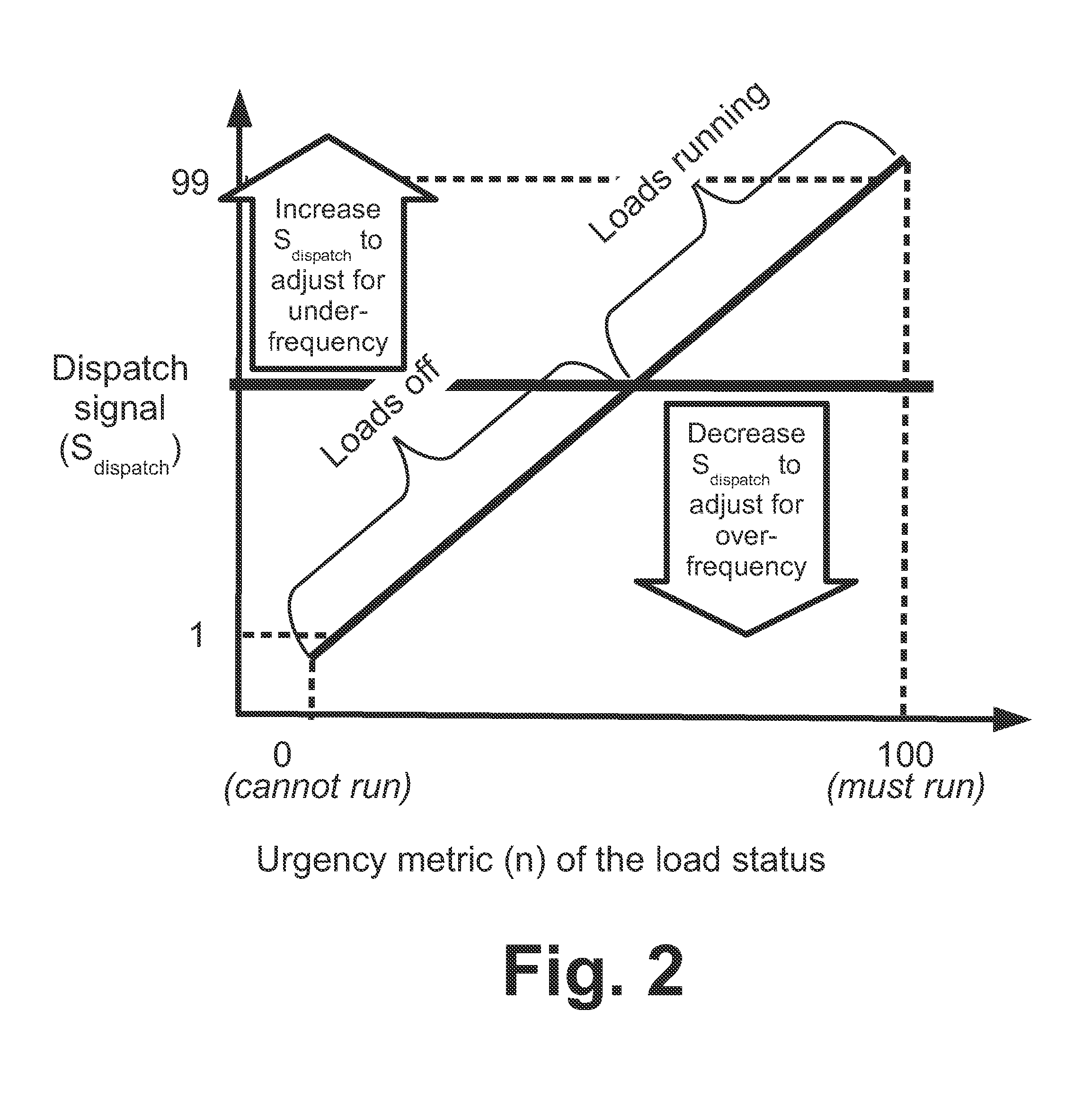Using demand side resources to provide frequency regulation
a demand side resource and frequency regulation technology, applied in the field of electric power grid arts and electrical power grid frequency control arts, can solve the problems of reducing electrical frequency, slowing mechanical rotation and consequently lowering electrical frequency, and a direct cost to the utility or other grid operator, and reducing the cost of construction and maintenance of frequency control devices. , the effect of reducing the overhead cost and energy waste of the power grid
- Summary
- Abstract
- Description
- Claims
- Application Information
AI Technical Summary
Benefits of technology
Problems solved by technology
Method used
Image
Examples
Embodiment Construction
[0014]Disclosed herein are approaches for control of loads that balances the objectives of providing power grid frequency control, on the one hand, and efficiently operating the individual loads, on the other hand. These objectives are not necessarily in concert. For example, when the grid is in an under-frequency condition the grid operator may wish to reduce the power draw of the loads; however, if the stored water temperature in a hot water tank is approaching its low temperature threshold then power must be drawn immediately to maintain water temperature. Conversely, if the grid is in an over-frequency condition and needs additional load, but the stored water temperature in a hot water tank is approaching its high temperature threshold, then power that hot water tank may not draw any heating power at that time.
[0015]In the case of large industrial loads under DLC, it may be feasible to provide individualized DLC control for each load that balances the potentially contradictory o...
PUM
 Login to View More
Login to View More Abstract
Description
Claims
Application Information
 Login to View More
Login to View More - R&D
- Intellectual Property
- Life Sciences
- Materials
- Tech Scout
- Unparalleled Data Quality
- Higher Quality Content
- 60% Fewer Hallucinations
Browse by: Latest US Patents, China's latest patents, Technical Efficacy Thesaurus, Application Domain, Technology Topic, Popular Technical Reports.
© 2025 PatSnap. All rights reserved.Legal|Privacy policy|Modern Slavery Act Transparency Statement|Sitemap|About US| Contact US: help@patsnap.com



